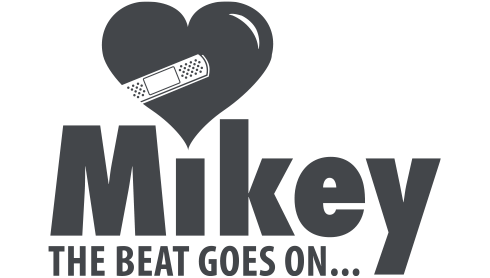Heart Health Glossary
A
Ablation: Procedure that eliminates extra electrical pathways within the heart that cause fast of irregular heart rhythms.
AED: Automatic External Defibrillator. A portable, user-friendly electronic device that automatically diagnoses potentially life-threatening heart rhythms and, if necessary, permits a shock to be delivered to restore a normal heart rhythm. Also known as simply a defibrillator.
Aneurysm: Small pouches on blood vessel walls. The blood vessel or area of the heart is thin or weakened in this area. They can rupture (break), causing bleeding.
Angina: A recurring pain or discomfort in the chest area. This discomfort is caused by some part of the heart not receiving
enough blood. The pain can feel like heaviness, a burning sensation or a discomfort in the left arm or jaw.
Aorta: The largest artery in the body, and the primary blood vessel that carries oxygenated blood out of the heart to the rest of the body.
Aortic Regurgitation: A backwards leakage of blood from the aorta, through a weakened aortic valve, into the left ventricle. This results in stress in the left side of the heart and an inadequate blood flow to the body.
Aortic Stenosis: A narrowing of the opening of the aortic valve, the valve that regulates blood flow from the left ventricle of the heart into the aorta.
Arrhythmia: An abnormal heart rhythm. Also known as dysrhythmia.
Arrhythmogenic Right Ventricular Dysplasia (ARVD): A rare condition that produces ventricular tachycardia. In this disease ventricular muscle is
replaced by fatty and fibrous tissue for unknown reasons. It is emerging as a cause of sudden cardiac death (SCD) in young otherwise healthy adults.
Artery: A blood vessel which carries oxygen rich blood away from the heart to the body. The major arteries of the heart are called the coronary arteries.
Atrial Septal Defect: A small hole in the septum or top part of the heart. Also known as ASD.
Atherosclerosis: A buildup of cholesterol or other fatty deposits called plaque that can occur on the inner walls of blood vessels and arteries, which in
advanced stages causes restriction or blockage of blood flow to the heart or brain.
Atrial Fibrillation: A very fast and irregular beating or quivering of the upper two chambers of the heart. This condition happens just before a cardiac arrest or just as the heart stops all together.
Atrial Flutter: A supraventricular tachycardia with a characteristic electrocardiographic appearance. It frequently coexists with atrial fibrillation and is usually associated with structural heart disease.
Atrial Tachycardia: A rapid rhythm driven by pacemaker activity in atrial sites other than the SA node (the natural pacemaker).
Atrioventricular Block: An interruption of the electrical signal between the atria and the ventricles.
Atrioventricular Nodal Reentrant Tachycardia (AVRT): A supraventricular tachycardia caused by dual conduction pathways within the AV node which have different speeds of transmission.
Automatic External Defibrillator: see AED
B
Blood Clot: A thick, gelatinous mass of blood
Blood pressure: The pressure in your main artery system which is usually measured on your arm.
Brugada Syndrome: A hereditary disease that is associated with high risk of arrhythmia causing sudden cardiac arrest.
Bundle Branch Block: A condition in which the heart’s electrical system is unable to normally conduct the electrical signal.
Bypass Surgery: A blood vessel, usually taken from the leg or chest and is grafted onto the blocked artery, bypassing the blocked area. The blood can then go around the obstruction to supply the heart with enough blood to relieve pain.
C
Capillaries: Tiny blood vessels between arteries and veins that distribute oxygen rich blood to the body.
Cardiac: To do with the heart.
Cardiac Arrest: When your heart stops beating.
Cardiomyopathy: Disease of the heart muscle, causing decreased functioning of the heart.
Cardiovascular Disease: Any disease that affects the heart and its circulation.
Cardioversion: Delivery of a shock to the heart to interrupt arrhythmias. Paddles on the chest or electrodes placed directly on the heart are used.
Cholesterol: A waxy substance that is produced by the human body. Cholesterol is found in animal fats (beef, chicken, pork), shellfish, and dairy products (butter, milk, cheese ,eggs). The body needs cholesterol to produce hormones. When too much cholesterol circulates in the blood, atherosclerosis (hardening of the arteries) occurs and an increased risk of heart attack.
Commotio Cortis: Is a disruption of heart rhythm that occurs as a result of a blow to the area directly over the heart (percordial region) a t a critical time
during the cycle of a heartbeat. It is a form of ventricular fibrillation, not mechanical damage to the heart muscle or surrounding organs, and not the result of heart disease. The fatality rate is about 65%. It can sometimes, but not always, be reversed by defibrillation.
Congenital: Present at birth.
Congenital Heart Disease: A heart defect present at birth.
Congestive Heart Failure. A condition in which the heart cannot pump out all the blood. This can lead to an accumulation of blood in the vessels going into the heart and an accumulation of fluid in the body tissues. Excess blood can increase in the lungs blood vessels leading to fluid accumulation in the lungs which creates congestion. Also known as CHF
Coronary Artery: Either of the two arteries that originate in the aorta and supply blood to the heart.
Coronary Artery Disease: Result of the build up of plaque deposits on the inner lining of the coronary arteries. Also known as CAD.
Coronary Heart Disease: The most common form of heart disease. This type of heart disease is caused by a narrowing of the coronary arteries that
feed the heart. The result in not enough oxygen rich blood reaching the heart. Also known as CHD.
Coronary Spasm: Abnormal sustained constriction of a major coronary producing symptoms of ischemia.
Coronary thrombosis: Total blockage of the blood flow to the heart due to a blood clot in a coronary artery, also called a “heart attack” or “myocardial infarction.”
CPR: Cardio-Pulmonary Resuscitation. A life-saving emergency medical procedure for restoring normal heartbeat, through manual and continuous compressions on the chest of the victim.
Cyanosis: Due to an insufficient oxygen supply in the blood that would leave tissue appearing blue, first seen in lips and nails.
D
Defibrillation: A medical procedure to restore normal heart rhythms by delivering an electric shock to the heart.
Defibrillator: Any medical device that has the ability to provide an electric shock to restore normal heart rhythms.
Dyspnea: Shortness of breath; occurs normally during intense physical exertion or at high altitude.
Dysrhythmia: An abnormal heart rhythm. Also known as arrhythmia.
E
Echocardiogram: A cardiac test and way to see the heart with the use of ultrasound imaging.
Electrocardiogram: A method for studying the heart by measuring the electrical impulses of the heart as they are detected on the surface of the body. Also known as EKG or ECG.
Embolism: A blood clot in a blood vessel.
Endocarditis: A bacterial infection that can form on the valves and on the interior surfaces of the heart.
Extrasystoles: Extra beats, usually occurring earlier than expected in normal rhythm, triggered by impulses originating from an abnormal site.
F
Fibrillation: Rapid contractions of the heart muscles, sometimes called quivering of the heart muscle. When your heart is in fibrillation blood cannot be pumped in or out properly. Fibrillation can lead to cardiac arrest, a stopping of all heart functions.
Flutter: Ineffective contractions of the heart muscle.
H
Heart Attack: Occurs when blockages in the heart’s blood vessels prevent proper flow, causing the heart muscle to die. Sudden Cardiac Arrest is often mistaken for a massive heart attack. (see Sudden Cardiac Arrest)
Heart Block: An interruption of the electrical pathway causing a slowing of the heart rate.
Heart Failure: A condition where the heart fails in its duties of circulating blood through the lungs and back out to the tissues. Congestive heart failure refers to a heart failure condition in which the body has accumulated extra fluid so that the lungs are congested.
Heart Valve Prolapse: A condition of the heart valve where is it partially open instead of being closed.
High Blood Pressure: The pressure in the blood vessels that is above the normal range. Also known as Hypertension.
High Density Lipoprotein: The “good” cholesterol that promotes breakdown and removal of cholesterol from the body.
Hypertension: High blood pressure that is exerted against the walls of blood vessels as blood is pumped through the body.
Hypertropic Cardiomyopathy: Is a disease of the myocardium (the muscle of the heart) in which a portion of the myocardium is thickened without any
obvious cause. It is most well known as a leading cause of sudden cardiac death in young athletes.
Hypotension: Low blood pressure.
L
Lipid: Any fatty substance in the body, including cholesterol and triglycerides.
Long QT Syndrome: An inherited heart condition in which a delayed action in the heart following a heartbeat forms an irregular heartbeat. These episodes may lead to palpitations, fainting and sudden death due to ventricular fibrillation.
M
MIKEYs: Public Access Defibrillators, also called Automatic External Defibrillators. Defibrillator can hard to spell and even harder to say, so we call them MIKEYs. (see AED, PAD, Defibrillator)
Myocardial infarct: Occurs when one or more regions of the heart muscle experiences a severe or prolonged decrease in oxygen supply caused by a blocked blood flow to the heart muscle, which causes the heart to stop. Also known as a heart attack.
Myocardial Ischemia: An insufficient blood flow to part of the heart.
Myocardium: The muscular layer of the heart.
Myocarditis: inflammation of the muscular walls of the heart
O
Occluded Artery: An artery that is narrowed by plaque, impeding the flow of blood.
P
PAD: Public Access Defibrillator. An AED located in a public and easily accessible location. (see AED)
Palpitation: Forcible or irregular pulsation of the heart, usually with an increase in frequency or force, with or without irregularity in rhythm.
Pericarditis: Inflammation of the pericardium.
Pericardium: Sack that surrounds the hear.
Premature Arterial Contraction: An early heartbeat started by the atria.
Premature Ventricular Contraction: An early heartbeat started by the ventricles.
Pulse: The rhythmic expansion of an artery that can be felt with the finger on your wrists, neck and temple, reflects the number of times your heart beats each minute.
S
Septal Defect: A hole in the wall between the atria or ventricles (upper or lower heart chambers.
Septum: A muscle wall between the atria or ventricles.
Sinus Node: The heart’s natural pacemaker, produces electrical impulses to keep the heart beating at a healthy pace by causing the heart to contract
and pump blood at regular intervals.
Sinus Rhythm: A normal heart rhythm of 60-100 beats per/min at rest originating from the sinoatrial node.
Sinus Tachycardia: A normal heart rate greater than 100 beats/min. It occurs as a desirable response to exertion, pregnancy, and emotion. It may also
occur with, illness, circulatory problems, or drug use.
Stenosis: A narrowing or constriction of a blood vessel or valve in the heart.
Stroke: The sudden disruption of blood flow to the brain. Many strokes are caused by a clot of blood traveling into the brain (thrombosis). A stroke
may also be caused by a rupture of a blood vessel (hemorrhage).
Sudden Cardiac Arrest: The sudden, unexpected loss of heart function, breathing and consciousness. This is usually caused when abnormal heart rhythms prevent the heart from pumping blood to the brain and other organs. Also known as SCA. Often confused with a heart attack. (see Heart Attack)
Sudden Cardiac Death: Generally idefined as an unexplained (non-traumatic) death that occurs suddenly and unexpectedly within one hour of onset of symptoms. Death is usually due to cardiac arrhythmias ventricular tachycardia/fibrillation
Supraventricular Tachycardia: Arrhythmias caused by electrical events originating in the atria, i.e. above the ventricles.
Syncope: Loss of consciousness and postural tone caused by diminished cerebral blood flow usually associated with aging.
T
Tachycardia: Excessive rapidity in the action of the heart, usually above 100 beats per minute in an adult.
Thrombus: A clot in the cardiovascular system.
Torsade de Pointes (Twisting of the points): A unique form of ventricular tachycardia that can be congenital in origin or can result from antiarrhythmic or psychotropic drug therapy, hypocalcemia, or acute myocardial infarction.
V
Valvular Stenosis: Narrowing of the heart valves (the specific valve that is affected is often preceded by the word stenosis, i.e., aortic stenosis, mitral
stenosis, pulmonary stenosis and tricuspid stenosis).
Vascular: Refers to the blood vessels.
Ventricular Fibrillation: A rapid, disorganized, and chaotic contraction of ventricular muscle accompanied by loss of effective pumping of blood. It
results in loss of consciousness and death if it is not terminated immediately by delivery of shock with a defibrillator.
Ventricular Tachycardia: A very rapid heart rhythm arising within the ventricles.
W
Wolff-Parkinson-White Syndrome: A syndrome with abnormal ECG and where aberrant conducting pathways allow inappropriate transmission of signals from the atria to t he ventricles or back to the atria from the ventricles.






